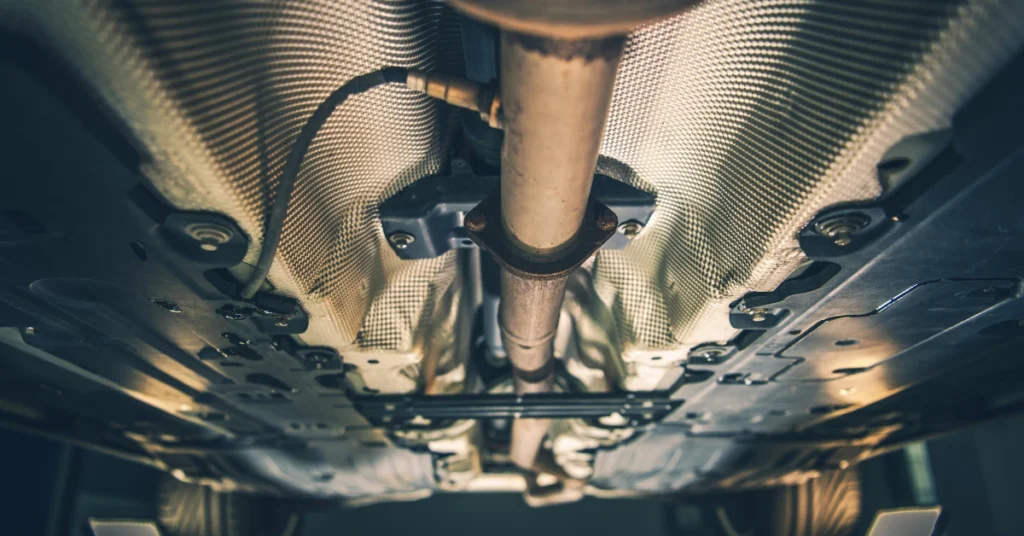
The Land Rover is renowned for its iconic design, luxurious features, and exceptional off-road capabilities. However, some Land Rover owners may encounter a common issue known as the P0300 error code.
In this article, we will delve into the meaning of the P0300 code, explore its possible causes, and provide effective solutions to resolve it.
Contents
Understanding the P0300 Land Rover Error Code
The P0300 code is a generic powertrain code that signifies the detection of a random misfire in one or more cylinders. Essentially, this means that the engine control module (ECM) has identified an irregular combustion event in the engine, resulting in a misfire.
When a misfire is detected, the ECM triggers the illumination of the Check Engine Light and stores the corresponding trouble code, such as P0300, to aid in diagnosing the issue.
Possible Causes of the P0300 Code
When encountering the P0300 code in a Land Rover vehicle, it is essential to consider several potential causes that may contribute to its occurrence. By understanding these possibilities, you can effectively diagnose and resolve the issue:
Ignition System Issues
Faulty spark plugs, ignition coils, or spark plug wires can lead to inconsistent firing of the cylinders, resulting in a misfire. Regular inspection and replacement of worn or damaged components are crucial for maintaining optimal ignition performance.
Fuel System Problems

Insufficient fuel pressure, clogged fuel injectors, or a malfunctioning fuel pump can cause the engine to misfire. It is important to test the fuel pressure to ensure it meets the manufacturer’s specifications.
Additionally, cleaning or replacing clogged fuel injectors and addressing any fuel pump issues are necessary steps in resolving the P0300 code.
Vacuum Leaks
Air leaks in the engine’s intake manifold or vacuum hoses can disrupt the ideal air-to-fuel ratio and lead to misfires. Thoroughly inspecting the intake manifold and vacuum hoses for any leaks or damage is crucial.
Repairing or replacing any faulty components will help restore the proper air intake and prevent misfires.
Sensor Malfunction
A malfunctioning crankshaft position sensor, camshaft position sensor, or oxygen sensor can provide inaccurate data to the ECM, leading to the detection of misfires. Utilizing a diagnostic scanner to identify any faulty sensors is essential. Replace any malfunctioning sensors to ensure accurate readings and prevent misfires.
Engine Mechanical Issues
Problems with the engine’s valves, piston rings, or cylinder compression can affect the combustion process and result in misfires. In cases where other potential causes have been ruled out, it may be necessary to inspect the engine’s internal components.
Checking valve clearances, inspecting piston rings, or performing a compression test are steps that may be required in diagnosing and resolving mechanical issues contributing to the P0300 code.
Exhaust System Restrictions

A clogged catalytic converter or blocked exhaust system can cause back pressure, leading to misfires. Thoroughly inspecting the catalytic converter and exhaust system for any restrictions or blockages is crucial.
Replace any damaged components to restore proper exhaust flow and prevent misfires.
Resolving the P0300 Code
Promptly diagnosing and addressing the underlying issue is crucial when facing the P0300 code in your Land Rover. Here are some steps to help resolve the problem:
Check the Ignition System
Thoroughly inspect the spark plugs, ignition coils, and spark plug wires for signs of wear or damage. Replace any faulty components and ensure proper connections to maintain consistent ignition performance.
Verify the Fuel System
Test the fuel pressure to ensure it meets the manufacturer’s specifications. Clean or replace clogged fuel injectors and address any fuel pump issues that may contribute to misfires.
Inspect for Vacuum Leaks
Perform a comprehensive inspection of the intake manifold and vacuum hoses for any leaks or damage. Repair or replace any faulty components to restore proper air intake and prevent misfires.
Scan for Sensor Malfunctions
Utilize a diagnostic scanner to check for any malfunctioning sensors. Replace any faulty sensors that may contribute to misfires and ensure accurate data readings.
Address Engine Mechanical Problems
If all other potential causes have been ruled out, it may be necessary to inspect the engine’s internal components. Checking valve clearances, inspecting piston rings, or performing a compression test are steps that may be required.
Seek professional assistance if needed to diagnose and resolve mechanical issues contributing to misfires.
Examine the Exhaust System
Thoroughly inspect the catalytic converter and exhaust system for any restrictions or blockages. Replace any damaged components that may cause back pressure and lead to misfires.
Maintenance Tips to Prevent Future Misfires
To avoid encountering the P0300 code or other misfire-related issues in your Land Rover, consider implementing the following maintenance tips:
Regular Servicing
Schedule regular maintenance and servicing according to the manufacturer’s recommendations. This includes timely oil changes, air filter replacements, and spark plug inspections to ensure optimal engine performance.
Use High-Quality Fuel
Opt for high-quality fuel that meets the recommended octane rating for your Land Rover. This helps maintain optimal engine performance and reduces the likelihood of misfires.
Keep the Ignition System in Good Condition
Regularly inspect and replace worn-out spark plugs, ignition coils, and spark plug wires to ensure a consistent spark and prevent misfires.
Address Check Engine Light Promptly
If the Check Engine Light illuminates, have your Land Rover diagnosed by a qualified technician to identify and resolve any potential issues before they escalate and cause misfires.
Maintain a Clean Air Intake
Regularly inspect and clean the air intake system to prevent debris or dirt from entering the engine and causing misfires.
By following these maintenance tips and promptly addressing any issues that arise, you can help prevent the occurrence of the P0300 code and ensure your Land Rover continues to perform optimally.
Conclusion
In conclusion, the P0300 code in a Land Rover indicates a random misfire in one or more cylinders. By understanding the potential causes and following the recommended steps for diagnosis and resolution, you can effectively address the issue and prevent future misfires.
Remember to prioritize regular maintenance and promptly address any Check Engine Light illuminations to keep your Land Rover running smoothly on and off the road.
FAQ
1. What does the P0300 error code mean in a Land Rover?
The P0300 error code in a Land Rover signifies the detection of a random misfire in one or more engine cylinders. It indicates that the engine control module (ECM) has identified an irregular combustion event, resulting in a misfire.
2. What are some possible causes of the P0300 code?
Some possible causes of the P0300 code in a Land Rover include ignition system issues (faulty spark plugs, ignition coils, or spark plug wires), fuel system problems (insufficient fuel pressure, clogged fuel injectors, or a malfunctioning fuel pump), vacuum leaks, sensor malfunctions, engine mechanical issues, and exhaust system restrictions.
3. How can I resolve the P0300 code in my Land Rover?
To resolve the P0300 code in your Land Rover, you can take the following steps:
- Check the ignition system for wear or damage and replace faulty components.
- Verify the fuel system by testing the fuel pressure, cleaning or replacing clogged fuel injectors, and addressing fuel pump issues.
- Inspect the intake manifold and vacuum hoses for leaks or damage and repair or replace any faulty components.
- Scan for sensor malfunctions using a diagnostic scanner and replace any faulty sensors.
- Address engine mechanical problems by checking valve clearances, inspecting piston rings, or performing a compression test.
- Examine the catalytic converter and exhaust system for restrictions or blockages and replace any damaged components.
4. What maintenance tips can help prevent future misfires in my Land Rover?
To prevent future misfires in your Land Rover, consider the following maintenance tips:
- Schedule regular servicing according to the manufacturer’s recommendations.
- Use high-quality fuel that meets the recommended octane rating.
- Inspect and replace worn-out spark plugs, ignition coils, and spark plug wires.
- Promptly address any Check Engine Light illuminations by having your Land Rover diagnosed by a qualified technician.
- Maintain a clean air intake system by regularly inspecting and cleaning it.



